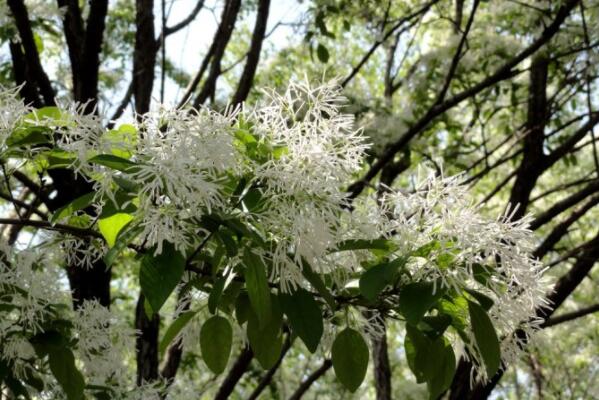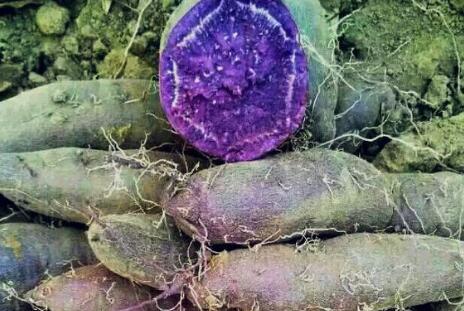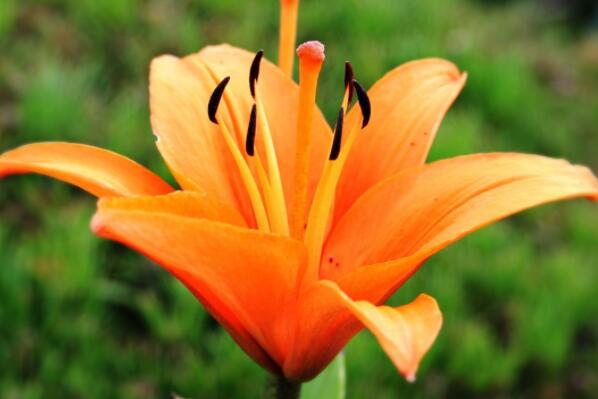How much is the price of deciduous shrub fringed tree seedlings? When does it blossom? Can sweet-scented osmanthus trees be grafted? How to plant
Tassel tree is also called radish silk flower, ox tendon seed, black gold seed, tea tree, April snow, deciduous shrub or small tree, tall and beautiful tree shape. How much does a tassel tree seedling cost? What month does it bloom? Can you graft osmanthus trees? How to grow? According to Oleaceae data, flowering period of tassel tree is June to July and fruiting period is September to October. Its early summer trees full of white flowers, such as frost cover snow, Qingli pleasant. Autumn fruiting, drupe elliptic, blue-black.

How much does a tassel tree seedling cost?
Seedling name Ground diameter (cm) Loading price Tassels 12~3 Tassels 26~8 Tassels 312~18 Tassels 425~40 Tassels 555~70 Tassels 6120~180 Tassels 7260~350 Tassels 8400~550 Tassels 9600~750 Tassels 10800~1000 Tassels 121300~1800
Can the tree be grafted with osmanthus?
Tassel trees can be grafted osmanthus fragrans, both of which are plants of osmanthus family.
1. Cutting method
When grafting, cut the appropriate part of the rootstock, select the smoother side of the bark, slightly cut vertically with xylem, and cut 2 cm to 3 cm deep. The scion is chamfered to a length of 2 to 3 cm and then chamfered to a length of 1 cm on the opposite side, while retaining 2 to 3 pairs of buds and cutting the branches. Immediately insert scion into rootstock so that cambium bonds intimately.
For large rootstock can be connected to several scions, scion inserted immediately after binding fixed with plastic film, while covering a small plastic bag moisture, heat preservation.
2. Abdominal connection method
Belly grafting is a branch grafting method without cutting off the rootstock crown. During grafting, the rootstock is obliquely cut into the rootstock at an inclination angle of 20 ° to 30 °, reaching 1/3 to 1/2 of the rootstock diameter. then both sides of the lower end of the scion are respectively cut into inclined surfaces of 1cm to 2cm, two to three opposite buds are reserved, the scion is inserted into a cutting edge of the stock, aligned with a cambium layer on one side of the stock, bound by plastic film strips, kept moist and kept warm.
3. Splitting method
When grafting, the rootstock will be cut into a plane at a certain height, and then split vertically in the center of the rootstock section with a splitting knife, the depth is 4 cm to 5 cm, and then insert the knife back into the incision to make it open. The scion is selected from 2-year-old branches with 4 to 5 pairs of buds, both sides of the scion are cut into equal wedges, then the scion is inserted into the rootstock incision, so that the two layers are closely combined, and the scion is firmly bound by plastic film strips, and at the same time, a plastic bag is sleeved and tightened, so as to keep moisture and heat.
4. Skin connection method
When the tassel sap has begun to flow, the bark is easy to peel off. First, cut a slope of 2 cm to 3 cm long at the back of the scion bud 1 cm to 2 cm, and then cut a small slope about 0.6 cm long at the tip of the slope. Then cut and flatten the rootstock where it is needed, then select the smooth part of the rootstock bark and cut it vertically from top to bottom, reaching the xylem deeply, about 1.5 cm long, gently pick open the cortex along the incision to both sides, and insert the scion.
If the rootstock is coarse, several scions can be grafted. After scions are inserted, they are bound and fixed with plastic film strips, and then covered with plastic bags for heat preservation and moisture retention.
5. Contact method
From May to July every year, tassels and osmanthus fragrans are cut off 5 cm to 10 cm respectively at appropriate heights, and two abutting inclined openings with a depth of 1/4 to 1/3 of the trunk diameter are aligned with the cambium and bound with plastic film strips. After one month of grafting (20 days for the fastest), the lower part of scion and the upper part of rootstock can be cut off.
How to grow tassel trees?
1. The propagation of tassel trees is mainly based on sowing. Before sowing, tassel seeds should be stored in sand to germinate, so as to have a good germination rate. The seeds can be sown in February, March, April and May. The seeds are mixed with wet sand and stored for about 20 days. When the seeds fully absorb water, they germinate and emerge in about 10 days. The key to seedling stage is water. When the soil is dry, water it in time to prevent water shortage and bud time difference.
2, planting fixed plants, the initial recommended plant spacing 30*50 cm, after 2 years of growth, re-planting, after two years of cultivation, tassel tree stem can reach more than 2 meters, diameter 1~2 cm, suitable for customized high stem seedlings. For the second time, it is suggested that the spacing of seedlings is 80*150 cm, and the distance between tassels can be 4~5 cm, about 3 years. After two transplants, the last transplant should be carried out. The plant spacing should be planted according to the size of the cultivated tree. If you want to raise large seedlings, leave a large distance. Generally, 4*5 is the best.
3. Tassel trees are fertilizer tolerant, cold resistant and drought tolerant. They need a lot of fertilizer during their growth period. In spring, apply 100 kg of chemical fertilizer per mu, sow or bury roots, water more after fertilization, keep sufficient water, and help the roots stretch and absorb nutrients. Fertilizer is applied once in autumn, 60 kg per mu; chicken manure, cow dung and pig manure are applied in winter, 3~4 tons per mu; no watering is needed for fertilization in winter.
Time: 2019-03-19 Click:
- Prev

How to grow purple potato of Convolvulaceae? Where is the best place to grow? How many jin per mu?
Purple potato, also known as black potato, vetch potato and so on, is a popular planting project among growers in recent years, with the characteristics of less input and more output. How do you grow purple potatoes? Where is the best place to grow? How many jin per mu? How to grow purple potatoes? Where is the best place to grow? I. selection of improved varieties
- Next

Bulbous lilies can be put in the bedroom? How to raise it after flowering? Attached cultivation techniques
Lily is a perennial herbaceous bulbous plant, native to China, also known as Qiangshu, Allium sativum, Shandan, inverted immortal, Chongmai, atrium, Moro, heavy box, Zhongfeng flower, lily garlic, master garlic, garlic brain potato, night lily and so on. So can I put the lilies in the bedroom? How to raise it after flowering? What are the cultivation techniques?
Related
- Fuxing push coffee new agricultural production and marketing class: lack of small-scale processing plants
- Jujube rice field leisure farm deep ploughing Yilan for five years to create a space for organic food and play
- Nongyu Farm-A trial of organic papaya for brave women with advanced technology
- Four points for attention in the prevention and control of diseases and insect pests of edible fungi
- How to add nutrient solution to Edible Fungi
- Is there any good way to control edible fungus mites?
- Open Inoculation Technology of Edible Fungi
- Is there any clever way to use fertilizer for edible fungus in winter?
- What agents are used to kill the pathogens of edible fungi in the mushroom shed?
- Rapid drying of Edible Fungi

